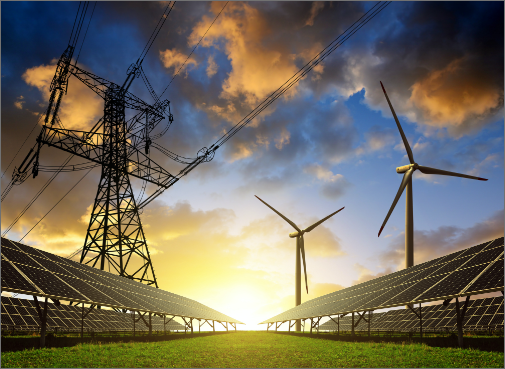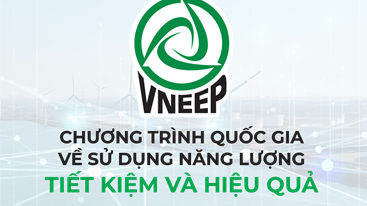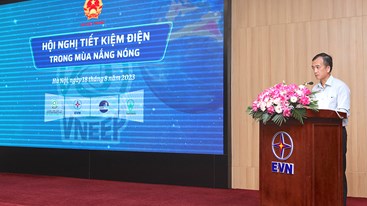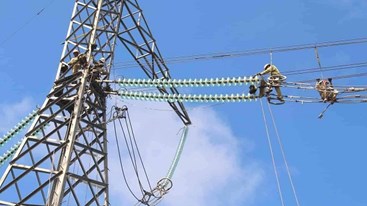Around the world, many countries are increasingly adopting net-zero emissions (NZE) targets to control their carbon emissions, develop lower-carbon energy systems and meet the goals of the Paris Agreement on climate change.
 In the coming years, Vietnam will emerge as one of the most promising liquefied natural gas import markets in Asia. Credit: VIR
In the coming years, Vietnam will emerge as one of the most promising liquefied natural gas import markets in Asia. Credit: VIRNatural gas – whether combined with renewables or as an energy source for sectors that are difficult to electrify – helps reduce overall emissions. Forecasts through 2040 show that gas and renewables will together account for 74% of total energy growth.
Demand for natural gas is expected to grow above 1,200 billion cubic meters (BCM) over the next 20 years. And about 65% of this growth is estimated to come from non-energy sectors such as industry (iron and steel production), residential, commercial and transport as lower carbon options are replaced.
Despite the unprecedented volatility, global LNG demand has grown to 360 million tonnes. Although low, the growth reflects LNG's resilience and flexibility.
The Covid-19 pandemic is also affecting future supply investment as only 3 million tonnes of new supply will be announced in 2020, much lower than the expected 60 million tonnes.
Global LNG demand is forecast to reach 700 million tons by 2040 as demand for natural gas continues to grow strongly in Asia. More investment in supply will be needed to avoid the supply-demand gap estimated in the middle of the current decade.
For Vietnam, in recent years, it has not been really necessary to import LNG for power production, but the Vietnam's government right from the planning of Power Plan VII (even in the years 2010 - 2011) has foreseen that the domestic gas supply cannot be guaranteed and in the next period the import of this fuel will occur in the upcoming time. Therefore, Power Planning VII has identified a list of gas-electric projects of Son My Power Center using imported LNG fuel.
In the coming years, Vietnam will emerge as one of the most promising liquefied natural gas import markets in Asia. The sheer scale of the proposed LNG infrastructure and gas power plant projects, as well as the number and variety of investors expressing interest, are unprecedented in the history of Vietnam electricity industry.
The interest is reinforced by Resolution 55 NQ-TW adopted by the Politburo in February, 2020 to reorient Vietnam's energy sector development strategy over the next decade, with a vision to 2045.
The resolution has limited the growth of coal-fired power, instead, it requires (along with renewable energy) to focus on the rapid development of LNG thermal power plants, and at the same time, to prioritize the development of infrastructure, to import and distribute this fuel with the following objectives: Vietnam to import 8 billion m3 of LNG per year by 2030 and 15 billion m3 per year by 2045 from the current zero.
Ha Tran









.jpg?w=367&h=206&mode=crop) Energy efficiency and conservation usage is an important aspect of the national energy development strategy
Energy efficiency and conservation usage is an important aspect of the national energy development strategy
 Challenges and Opportunities to promote energy efficiency market in Vietnam
Challenges and Opportunities to promote energy efficiency market in Vietnam
 The Ministry of Industry and Trade requests government agencies to coordinate in organizing Earth Hour 2024
The Ministry of Industry and Trade requests government agencies to coordinate in organizing Earth Hour 2024
 Consultation on Energy Efficiency Boiler Catalogue and Wood Drying Guideline
Consultation on Energy Efficiency Boiler Catalogue and Wood Drying Guideline
 Son Ha Co., Ltd, applies energy efficiency and conservation measures
Son Ha Co., Ltd, applies energy efficiency and conservation measures
 Phuc Kien Co., Ltd., is effectively implementing energy-saving measures
Phuc Kien Co., Ltd., is effectively implementing energy-saving measures
.png?w=367&h=206&mode=crop) Request for expression of interest - C2.1.13: Capacity Building on energy efficiency policies development
Request for expression of interest - C2.1.13: Capacity Building on energy efficiency policies development